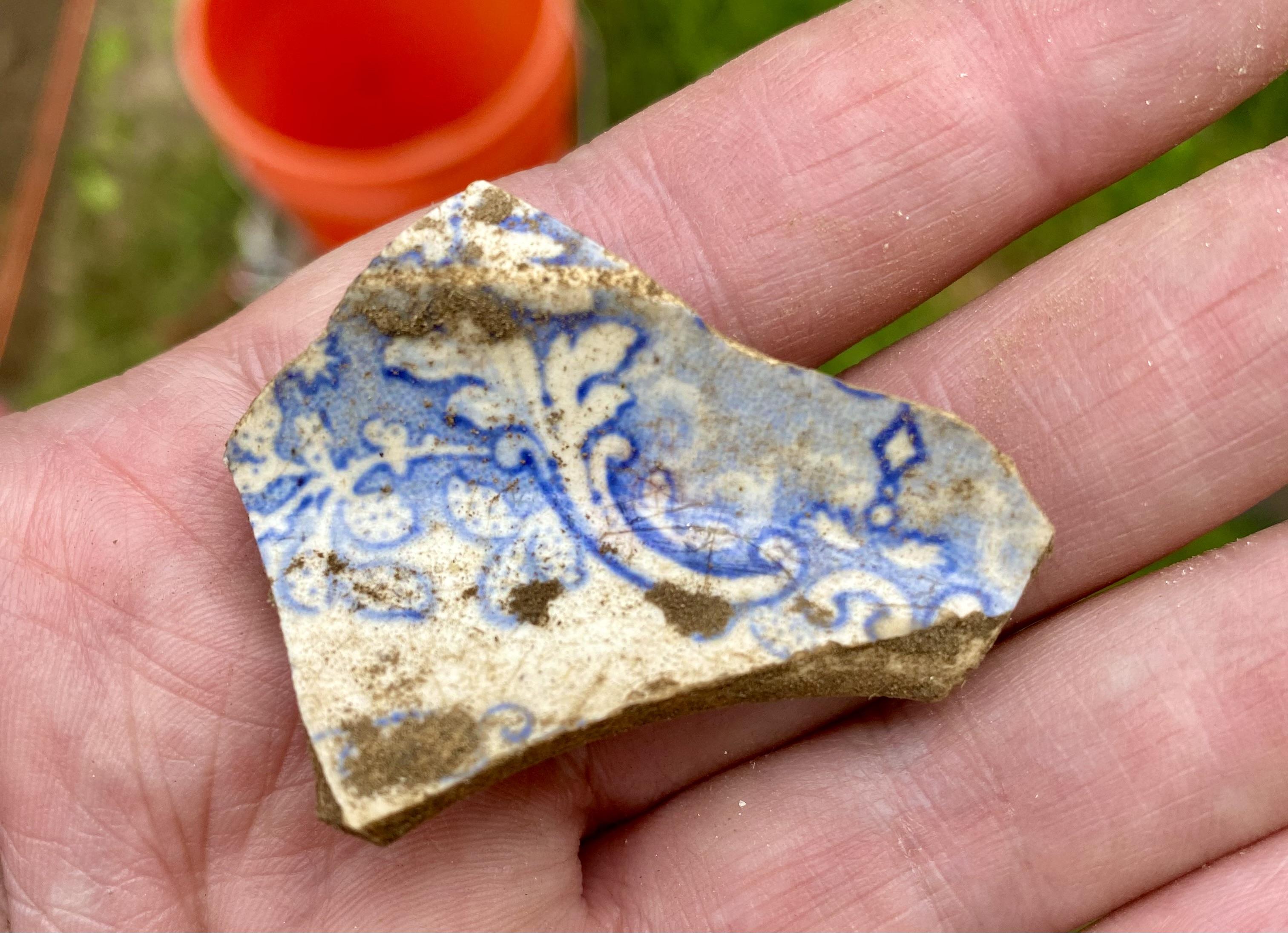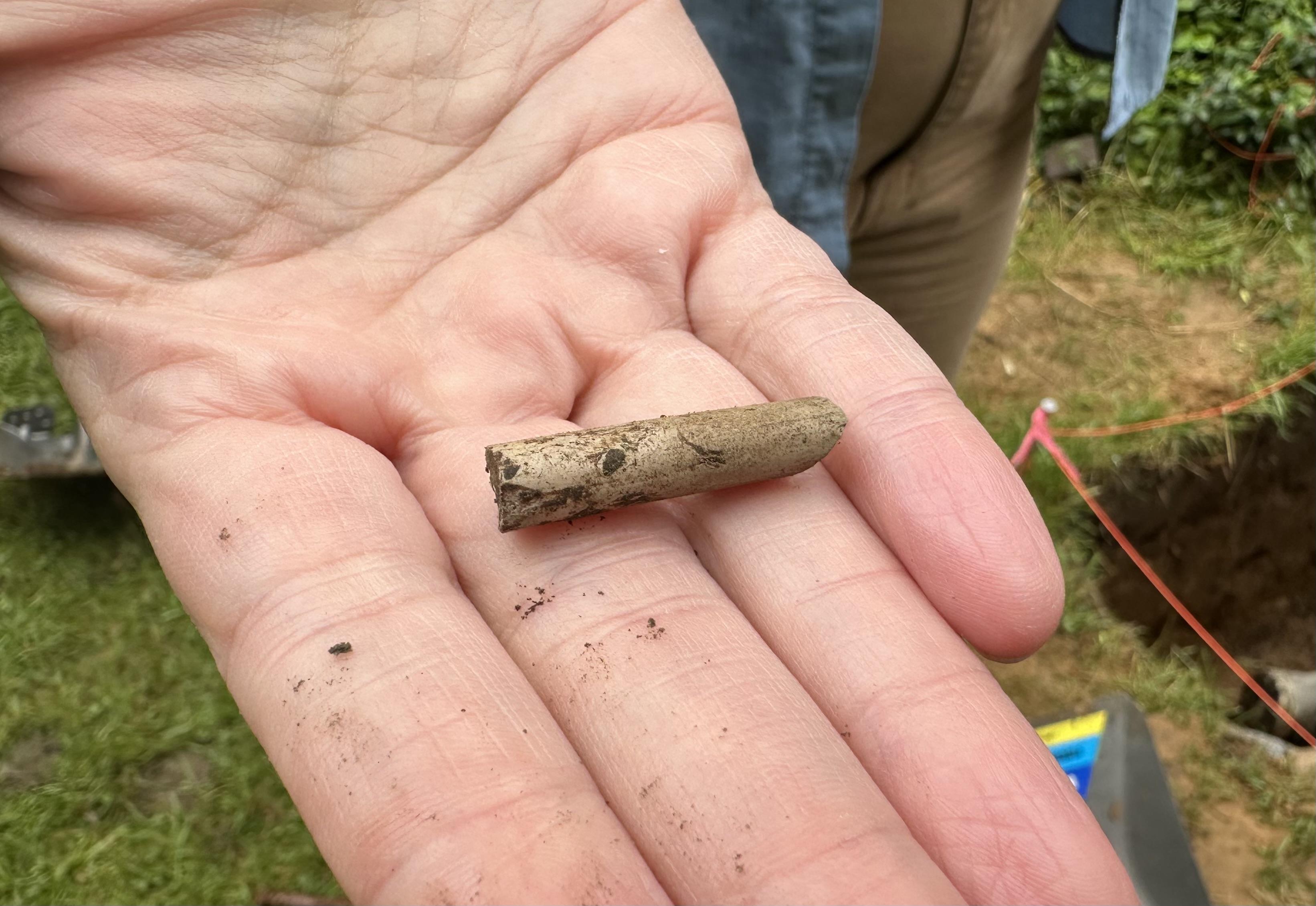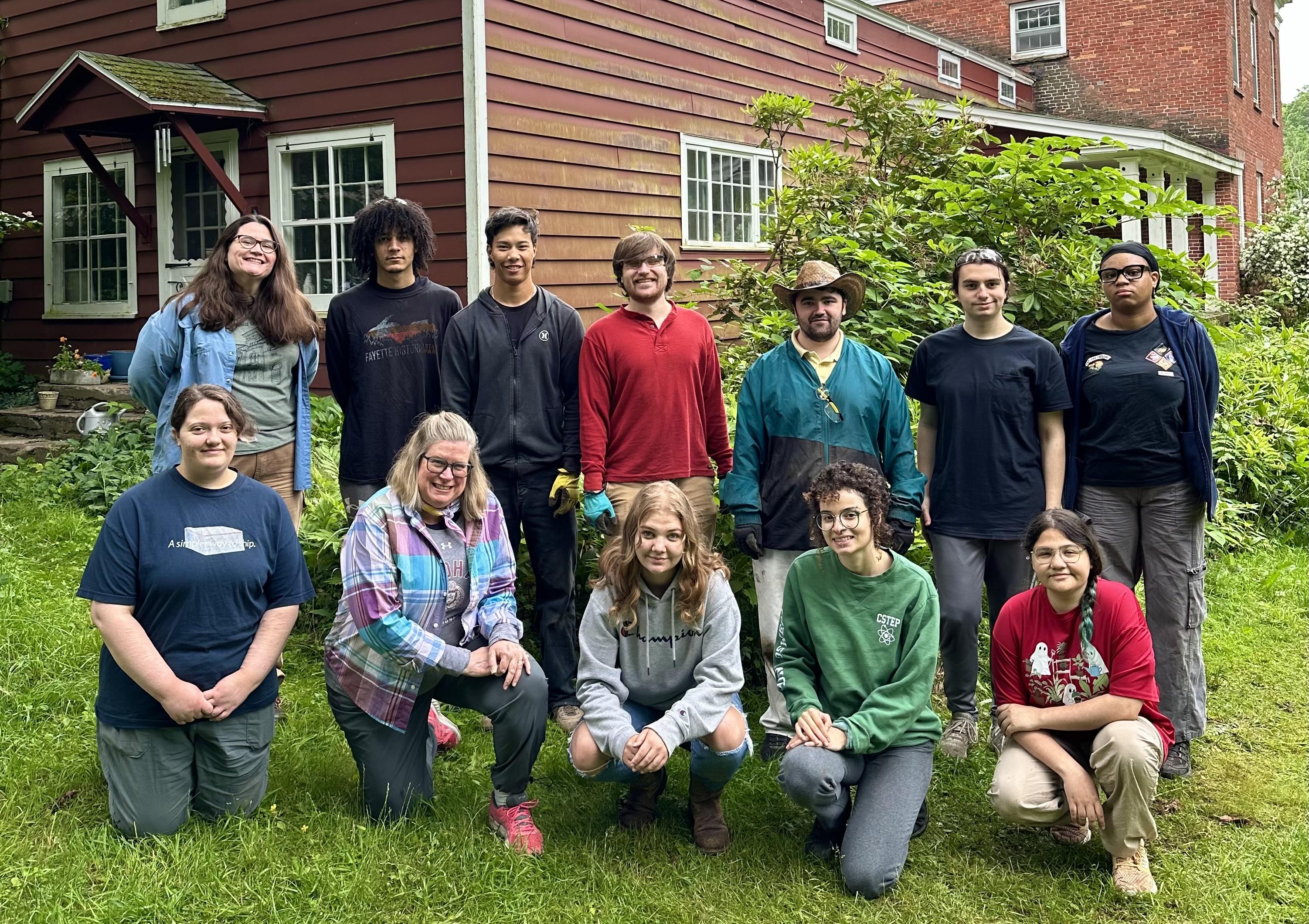Participants of SUNY Oswego's 2024 archaeological field school are, from the left in the top row, faculty member Alanna Ossa (field school director), Rudy Arietta, Emil Sander, Josh Winoski, Hunter Emery, Mackenzie Schmitt and Asra Fernandez Thomas; and, bottom row from left, Molly Metcalf (crew chief, undergraduate research assistant), Kristine Skinner, Cloey Wratten, Jylene Figueroa and Jazahia LoPresti.
SUNY Oswego’s archaeology field school led by anthropology faculty member Alanna Ossa returned this summer as 11 students participated in this year’s dig on a local property.
The property, the once Van Buren Inn and Tavern located along the Oswego River, provided students with a rich history and plenty of artifacts to unearth.
“Dr. Ossa said sometimes people used to just throw trash right out the window… we found a ton of pieces of small clay pipes and glass from ceramics,” explained senior anthropology major Kristine Skinner.
"We found some European and Dutch pipes, so that was really interesting to think about the people going through there and their backgrounds," said senior Jazahia LoPresti. "It’s a surreal experience... to think that people were living here one hundred, two hundred years ago.”


Some of the other items found included metal construction such as horseshoes and nails, oyster and clam shells and animal bones.
Students then collected the artifacts, dusted, labeled and categorized them, and analyzed them for characteristics that provided further knowledge about the property. The class even found additional buried structures.
“We found a large historic midden … located on the north side of the brick structure that housed the original Van Buren Inn and Tavern,” said Ossa of a trash heap that often provides a treasure trove for archeologists. “We also identified the likely structure of the blacksmith shop foundations through excavation, and we also located the foundation of the barn with [a] cooper shop.”
Local history and community connection
In the early 19th century, the grounds were owned by John Van Buren, the cousin of United States President Martin Van Buren. Structures on the property included a brick house, cottage and mule barn, all still standing, as well as a smokehouse, public livery, blacksmith shop, cooper shop, grocery and brickyard.
The riverfront property was once a popular stop among travelers along the Erie Canal, with traffic and goods moving to and through a bustling port of Oswego.
“At the time there was a dock there and people would have gotten off their boats and [visited],” said Skinner.
The current property owner, who is also fascinated by its rich history, allowed the class to dig on the site and spoke to them about Oswego's past. Skinner, who is also a long-time community member, reflected on this partnership between the university and local residents.
“The fact that [the property owner] approached Dr. Ossa and asked if we would be interested in digging, I mean that’s quite a commitment to offer your property and be so welcoming about it too,” said Skinner.
Hands-on field experience
Students who participated in the dig say they learned many valuable skills on-site that will benefit them in their careers. Many jobs in archaeology require a six-credit field school, which will be fulfilled by this experience.
LoPresti said working in the field was a lot different than his previous lab work and class experience, and provided more insight into their future career path.
“Being at the actual site is a lot different. You’re of course dealing with the environment now, dealing with bugs, the heat … but it’s honestly a lot more fun and engaging because you don’t really know what you’re going to find.”
Junior Mackenzie Schmitt said she especially enjoyed the analysis portion of the field school, which gave her clarity on what jobs she may like to pursue in the future.
“The fact that you’re doing the entire research process kind of gives you an idea of what you enjoy most,” said Schmitt. “I found that I was really enjoying noting the different types of decoration. It’s very promising when you have an idea of how everything goes down and you enjoy it all the same because that means you’ll actually enjoy doing it [as a career].”
Jylene Figueroa, a sophomore, said the field school made it easier for her to retain the information she was introduced to in previous classes.
“For me, it's so much easier to learn things by doing it instead of just having someone say something to you, so I feel like for me this was a really good learning experience," said Figueroa. “It’s easier for me to remember those things now that I’ve actually physically done it and have that experience.”
Skinner reflected on the soft skills she also learned during this experience that could apply to any position, including working with others and having good communication skills. She also hopes others will one day expand upon their research.
“Learning about the past in Oswego County, maybe somebody one day will take the research that we did and build on it to learn more. It’s kind of neat to have a hand in that,” said Skinner.
The students also expressed their gratitude for Ossa and her instruction.
“If I had to pick a favorite professor on campus it would probably be [Dr. Ossa]," said Schmitt. "Working with her has definitely given me a clearer picture of interactions with professors. It’s not the same way as it is in a pre-college education [with teachers]. The professors you’re interacting with feel like people.”
The field school is financially supported through grant funds from The Shineman Foundation, which was used to purchase new field equipment in 2022.




